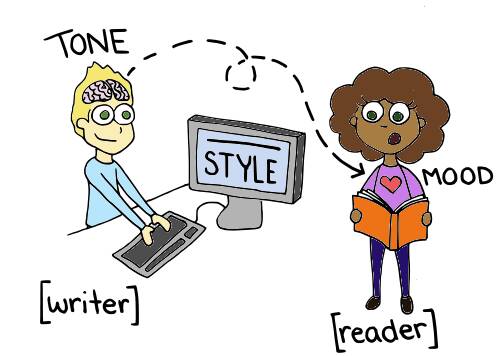50 Tone of Writing
Tone of writing identifies a writer’s attitude toward a subject or audience. It influences the message as well as the audience’s mood and receptiveness.
In conversation, you can usually determine a person’s tone quite easily based on the speaker’s pitch, speed, and loudness of their voice. A friend telling you about being accepted into nursing school may use an energetic and excited tone, while an instructor talking about academic integrity and plagiarism may use a matter-of-fact and serious tone.
In writing, you need to think more carefully about tone because you can’t rely on your spoken voice. Tone is conveyed by a range of elements: the level of formality, point of view, word choice, and punctuation. Your audience is relying on written text only, so be careful to ensure your tone isn’t misinterpreted. You may use a combination of tones in your writing, for example both scientific and professional or critical and political. Regardless of the tone you want to convey, it is important to be consistent throughout your paper.

Figure 5.2: Tone of writing
Student Tip
Do Not Use an Informal Tone
It is never okay to use an informal tone in scholarly writing or any professional communications (such as an email) with your instructor. All communications should involve a professional tone.
Here are a few examples of different tones. Click on each to learn more.
Activities: Check Your Understanding
How would you rephrase these statements to make them more scholarly?

